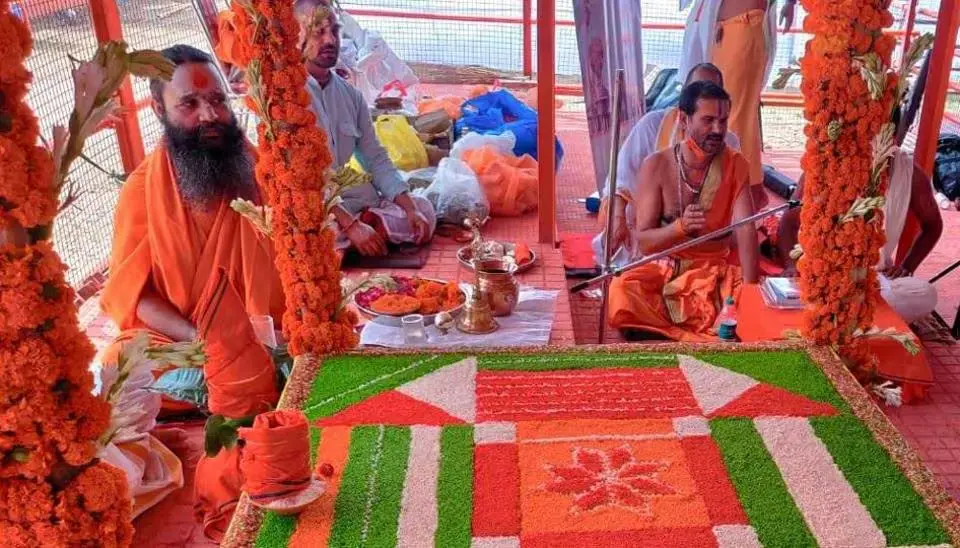Table of Contents
- Introduction to Puja Ceremonies in Ayodhya
- Understanding the Significance of Puja
- Preparing for Puja
- Common Puja Ceremonies in Ayodhya
- Participating in Puja: Etiquette and Practices
- Special Pujas and Festivals
- Integrating Puja into Personal Devotion
- Frequently Asked Questions (FAQ)
1. Introduction to Puja Ceremonies in Ayodhya
Ayodhya, a city with deep spiritual roots, is synonymous with Hindu rituals and ceremonies, especially Puja. Participating in Puja ceremonies here offers an immersive experience of Hindu devotional practices, allowing devotees to connect deeply with the divine.
- Ayodhya is known for its rich tradition of Hindu Puja ceremonies.
- Participating in these ceremonies offers a deep spiritual connection.
2. Understanding the Significance of Puja
Puja in Hinduism is an act of showing reverence to God through invocations, prayers, songs, and rituals. In Ayodhya, these ceremonies gain a special significance due to the city’s historical and mythological importance in Hinduism.
- Puja is a reverential act towards God, involving various rituals and prayers.
- Ayodhya’s historical significance adds depth to these ceremonies.
3. Preparing for Puja
Preparation for Puja involves both physical and mental readiness. This includes purifying oneself, wearing appropriate attire, and approaching the ceremony with a clear and focused mind. Bringing offerings like fruits, flowers, or sweets is also customary.
- Preparation involves physical cleanliness and mental focus.
- Devotees typically bring offerings like fruits, flowers, or sweets.
4. Common Puja Ceremonies in Ayodhya
In Ayodhya, common Pujas include the Aarti, Bhajan, and specific deity-focused Pujas like the Ram Puja at Ram Mandir. These ceremonies vary in their rituals and significance, each offering a unique spiritual experience.
- Common Pujas in Ayodhya include Aarti, Bhajan, and deity-focused rituals.
- Each Puja offers a unique spiritual experience.
5. Participating in Puja: Etiquette and Practices
When participating in Puja, it’s important to follow certain etiquettes such as removing shoes before entering a temple, maintaining silence, and following the lead of the priest or the congregation. It’s also respectful to participate in communal activities and follow local customs.
- Remove shoes, maintain silence, and follow the congregation’s lead during Puja.
- Participation in communal activities is considered respectful.
6. Special Pujas and Festivals
Ayodhya hosts special Pujas during festivals like Diwali, Ram Navami, and Navratri. These Pujas are more elaborate and attract a large number of devotees. Participating in these Pujas provides a deeper understanding of Hindu traditions and celebrations.
- Festivals like Diwali, Ram Navami, and Navratri feature special Pujas.
- These occasions offer a deeper insight into Hindu traditions.
7. Integrating Puja into Personal Devotion
For devotees seeking a more personal spiritual journey, integrating Puja rituals into daily practice can be fulfilling. This can include simple practices like lighting a diya, reciting prayers, or meditating at home or in a temple setting.
- Integrating Puja rituals into daily life can enhance personal devotion.
- Simple practices can include lighting a diya, prayer, or meditation.
8. Frequently Asked Questions (FAQ)
- What should I wear to a Puja ceremony in Ayodhya?
- Modest, traditional attire is recommended for Puja ceremonies.
- Is it necessary to know Sanskrit or Hindi to participate in Puja?
- While knowledge of Sanskrit or Hindi can enhance the experience, it is not necessary as devotion is the key.
- Can non-Hindus participate in Puja ceremonies?
- Yes, people of all faiths can participate, but should respect the customs and practices.
- Are there any specific Pujas that women or men should perform separately?
- Certain Pujas may have specific traditions; it’s best to inquire locally for details.
- How can I learn the rituals and meanings of different Pujas?
- Many temples offer guides or priests can provide explanations. Books and online resources can also be helpful.
- Is there a fee to participate in Puja ceremonies in Ayodhya?
- Generally, there is no fee, but donations to the temple are common and appreciated.
- Can I bring my own offerings to the Puja?
- Yes, bringing offerings like fruits, flowers, or sweets is customary and appreciated.
- What is the best time of day to participate in Puja?
- Early morning or evening Pujas are common, but times can vary depending on the temple and ritual.
Participating in Puja ceremonies in Ayodhya is not just a religious act but a deeply enriching cultural and spiritual experience. It allows devotees and visitors to connect with the essence of Hinduism in one of its most sacred landscapes. For a more comprehensive guide on participating in Pujas, including temple etiquette and detailed rituals, please visit our dedicated section on Ayodhya’s spiritual practices on our website.




